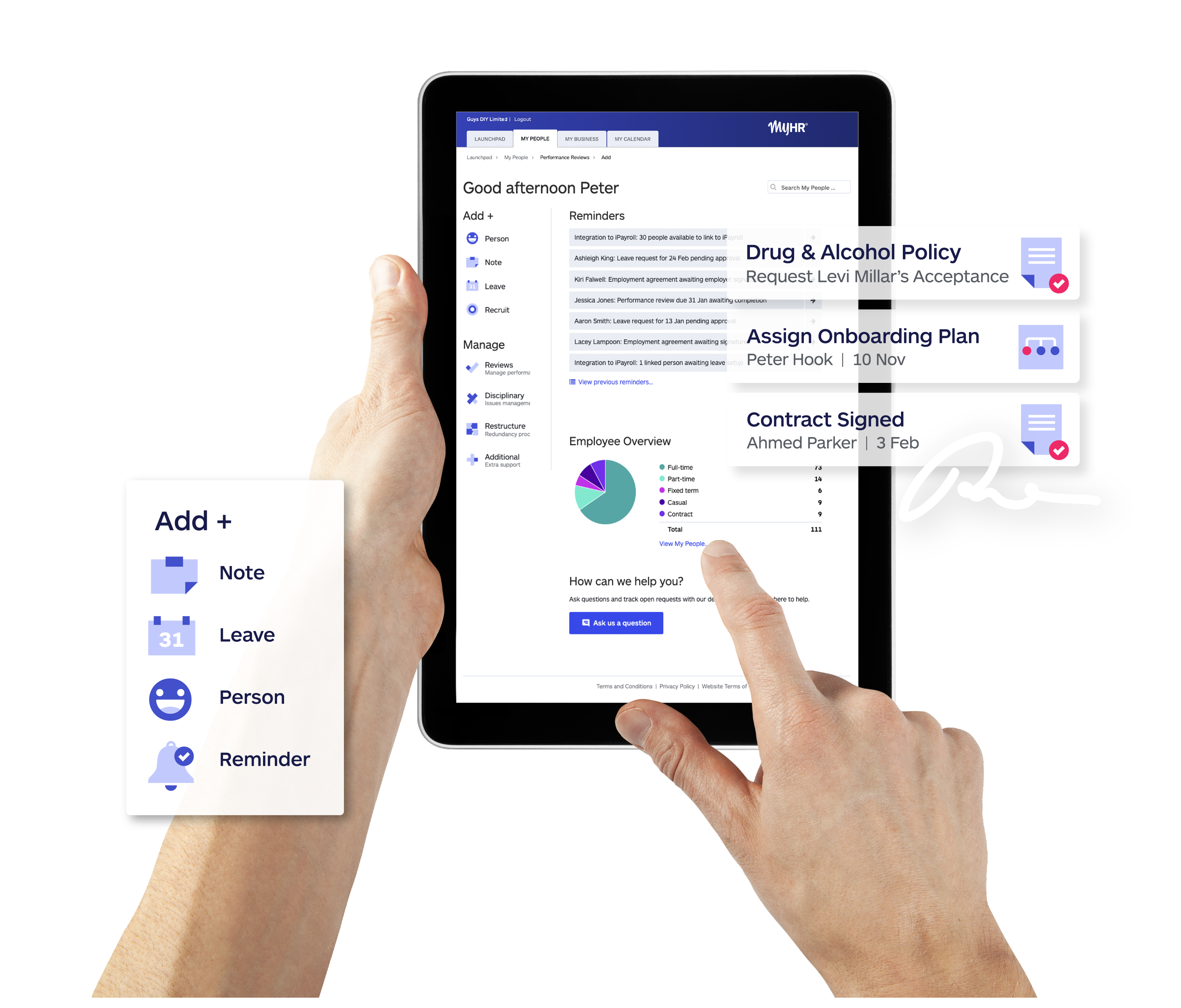
Burnout is a growing problem for many Canandian workers. A 2025 survey by consulting and recruitment firm, Robert Half, found that 47% of Canadians reported they were experiencing workplace burnout and 31% stated they were more burned out now than the year prior.
But just what is burnout and how can you recognize the risks and symptoms, not only in your colleagues and employees, but in yourself?
This post explains what burnout is, its causes, the most common warning signs, and how employers can recognize and address it early.
Quick summary: recognizing burnout at work
Definition: Chronic workplace stress leading to exhaustion and disengagement.
Top causes: Excess workload, low agency in the workplace, poor work-life balance.
Key signs: Fatigue, cynicism, low motivation, absenteeism.
Action steps: Check in regularly, adjust workload, encourage support.
Resources: , Beyond Blue check-in tool.
What is workplace burnout and how is it defined?
Burnout isn’t a recognized medical or mental health condition, but the World Health Organization (WHO) defines workplace burnout as an “occupational phenomenon” (or syndrome) resulting from “chronic workplace stress that has not been successfully managed”.
The WHO characterizes burnout in 3 ways:
- Feelings of energy depletion or exhaustion.
- Increased mental distance from the job, or feelings of negativism or cynicism towards work.
- Reduced professional effectiveness, e.g. low productivity.
Causes and effects of burnout
Burnout is a gradual process that develops over time. It’s caused by persistent stress or pressure, but is different from short-term stress that goes away once the immediate cause is relieved or removed.
Many things have been found to contribute to employees experiencing burnout, e.g. unrealistic workloads, having little or no control over their work, monotonous or unchallenging tasks, inadequate support, and job insecurity.
External factors can often play a part as well, e.g. poor work/life balance, financial pressures, too many responsibilities, social isolation.
If unchecked, the effect of long-term stress and burnout can impair a person’s ability to function, both at work and in personal life.
Mental Health Research Canada estimates that burnout costs employers $5,500–$28,500 per employee annually. Companies that prioritize prevention see 20% lower rates of burnout (27% versus 47%), resulting in potential savings of $3,400 per employee.
Australian research has found that people who are most at risk of burnout are likely to be reliable, conscientious, and perfectionistic. This means they could well be the employees you rely on most and really want to keep!
Workplace burnout can also lead to mental health issues like anxiety, depression, and insomnia, and poor physical health, e.g. high blood pressure, higher risk of heart attack or heart disease.
How can employers recognize the early warning signs of burnout in staff?
Burnout is a syndrome, which means it’s a collection of physical, emotional, and behavioural symptoms or signs. The signs vary from person to person and most people will experience a combination of symptoms.
Many people don’t recognize burnout or exhaustion until it’s a serious issue and they are struggling to cope. Awareness of burnout symptoms is key, so you can identify it and make changes to alleviate the cause(s).
Employee burnout checklist
Physical symptoms of burnout
- Persistent fatigue - Often feeling tired or exhausted
- Sleep issues - Difficulty falling asleep or staying asleep
- Tension pain - Frequent headaches, muscle or joint pain
- GI issues - Loss of appetite, nausea
- Recurring illness - Catching colds or flu more often
- Heightened anxiety - breathing problems, panic attacks, high blood pressure
Emotional symptoms of burnout
- Lack of motivation - feeling demotivated, having a cynical/negative outlook lacking sense of satisfaction and achievement
- Feelings of loneliness or isolation - feeling a failure or worthless feeling detached and alone in the world
- Easily overwhelmed - Loss of interest and enjoyment, persistent feelings of dread, worry, and anxiety.
Behavioural symptoms of burnout
- Reclusive behaviour - difficulty engaging in activities you normally find meaningful, becoming isolated and withdrawing from people, responsibilities
- Difficulty concentrating - lack of focus
- Decreased productivity - increased tardiness and/or higher absenteeism, procrastinating and taking longer to complete tasks
- Poor mood - Irritable and short-tempered, likely to have outbursts and take frustrations out on others
- Substance use or abuse - Increasing reliance on food, alcohol, or drugs to cope
Australian mental health charity, Beyond Blue, has an online burnout tool, to help you self-assess for signs of burnout.
What can employers do to prevent or respond to burnout?
Some people mask the symptoms and signs of burnout and keep going, because of work pressures or personal expectations. People can also blame themselves for feeling burnt out.
For employers and managers, having regular, honest conversations with employees is essential for spotting the warning signs and making changes.
If you have an Employee Assistance Program, make sure all your staff know it is available. The symptoms of burnout can also be linked to health conditions, such as depression, so don’t be afraid to seek or recommend professional help.
Where to get help for mental health and burnout support
If you suspect you or someone you know is suffering from burnout, excessive stress, or poor mental health, professional support is available:
- Find local crisis lines on the Government of Canada's list of mental health supports: https://www.canada.ca/en/public-health/services/mental-health-services/mental-health-get-help.html
- Call or text 9-8-8 — Canada’s Suicide Crisis Helpline. Free, confidential and available 24/7.
- Hope for Wellness Helpline for Indigenous people: https://www.hopeforwellness.ca/. Available 24/7.




